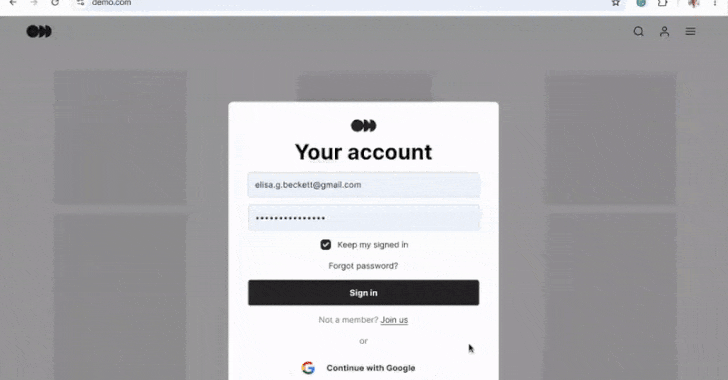When most people think of successful businesses, they often focus on front-facing elements: polished websites, outstanding customer service, sleek advertising campaigns, and brand reputation. But what many don’t see—or think about—is the hidden engine that keeps everything running efficiently: the behind-the-scenes operations. From procurement processes and supply chain management to internal communication systems and data analytics, these less visible components play a crucial role in driving growth, reducing waste, and boosting profits.
Optimising behind the scenes isn’t just about cutting costs; it’s about creating sustainable efficiencies that strengthen the entire business model. So, what actually happens when businesses invest in optimising their internal processes?
1. Costs Are Cut—But Strategically
One of the most immediate benefits is cost reduction. This doesn’t mean slashing budgets indiscriminately, which can hurt long-term viability. Instead, it involves identifying areas of inefficiency—manual data entry, duplicate efforts, slow procurement cycles—and streamlining them. Businesses that automate routine processes often save time and reduce human error, saving money and resources.
For example, optimised procurement systems can ensure that businesses always source the best products at the best prices. This minimises overspending, avoids stock shortages, and helps with better vendor relationships. Strategic cost management allows companies to reinvest savings into innovation and growth.
2. Processes Become Scalable
When systems are optimised, businesses are better equipped to grow. A well-designed internal infrastructure can handle increased demand, support remote workforces, and accommodate expansions with less friction.
Take supply chain logistics, for instance. Businesses that digitise their inventory and shipping operations can respond more nimbly to changes in demand. Cloud-based systems and real-time dashboards allow managers to make informed decisions quickly, keeping operations smooth even during periods of rapid growth.
This scalability also applies to compliance and reporting. As a company expands, maintaining regulatory compliance becomes more complex. Efficient back-end systems reduce the administrative burden and improve accuracy, ensuring companies remain on the right side of regulations without slowing progress.
3. Procurement Gets Smarter
Procurement is one area where behind-the-scenes optimisation makes a massive difference. Traditional procurement can be bogged down by lengthy approval processes, inconsistent supplier evaluations, and opaque spending data. With digital transformation tools like e-procurement platforms, businesses can turn procurement into a strategic asset.
Modern e-procurement solutions enable companies to automate vendor selection, manage contracts digitally, and monitor spending in real time. This leads to faster turnaround times, improved transparency, and better budget control. For example, platforms such as https://atamis.co.uk/ help businesses transform procurement into a streamlined, strategic process, allowing procurement teams to focus on value-added activities rather than paperwork.
By digitising procurement, companies gain insights into spending patterns, identify opportunities for consolidation, and mitigate risks such as supplier dependency or non-compliance.
4. Teams Collaborate More Effectively
Optimisation also enhances internal communication and collaboration. Disconnected teams, outdated file-sharing methods, and redundant emails waste time and dilute productivity. A unified digital infrastructure—such as an integrated project management tool or internal intranet—keeps everyone on the same page.
When back-office systems like HR, finance, and operations are connected, teams spend less time chasing down information and more time executing strategy. Automated workflows ensure that approvals move through the system quickly and that everyone involved is notified of changes in real time. This boosts morale, supports accountability, and enhances agility across the organisation.
5. Decision-Making Becomes Data-Driven
Optimised businesses rely on data, not guesswork, to guide decisions. This is made possible by integrating systems that collect, analyse, and present data in user-friendly dashboards. Whether it’s financial performance, employee productivity, or customer behavior, access to reliable data allows leaders to make smarter, faster decisions.
Moreover, predictive analytics—powered by AI and machine learning—can help identify trends before they fully emerge. For instance, if purchasing data reveals a spike in demand for a particular product in a specific region, a business can proactively boost inventory in that area, reducing missed sales opportunities.Optimisation helps turn data from a byproduct of business activity into a core strategic resource.
6. Risk Management Improves
Behind-the-scenes optimisation also strengthens risk management. Whether it’s financial, operational, or cybersecurity risk, automated and integrated systems reduce the likelihood of errors, detect anomalies faster, and provide a clear audit trail.
Cybersecurity is a key area where optimisation matters. Businesses that modernise their IT infrastructure with secure platforms and regular updates significantly lower the risk of data breaches. Likewise, standardised procurement and compliance workflows reduce the chance of accidental non-compliance or fraud. With enhanced visibility and control, companies are better prepared to identify and mitigate potential risks before they escalate.
7. Customer Experience Quietly Improves
Although customers may never see your internal systems, they certainly feel their impact. A company that optimises behind the scenes can fulfil orders more quickly, respond to inquiries with greater accuracy, and provide a consistent experience across all touchpoints.
For instance, streamlined inventory systems reduce the chances of “out of stock” disappointments. Real-time data allows customer support teams to resolve issues faster. And digital procurement ensures that raw materials or products are consistently available to meet demand.
The ripple effect of internal efficiency reaches customers in the form of better service, faster turnaround, and higher satisfaction—all without needing to overhaul the front end.
Conclusion
Optimising behind the scenes is like strengthening the foundation of a house—it may not be glamorous, but it’s essential for long-term stability and success. The benefits are wide-ranging and deeply impactful, from smarter procurement and streamlined workflows to data-driven decisions and better risk management.
In an increasingly competitive business landscape, organisations that invest in their internal processes are better positioned to adapt, grow, and thrive. It’s not just about doing things faster or cheaper; it’s about building a business that can withstand change, scale intelligently, and deliver exceptional value from the inside out.



















